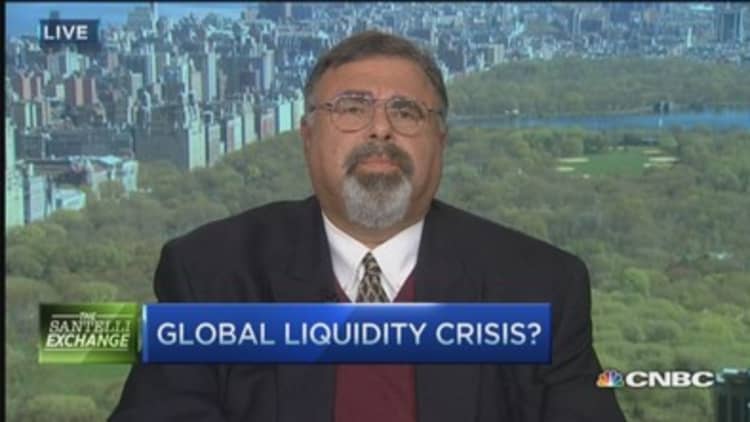
A market that just a week ago worried that the Federal Reserve would begin raising rates too soon is now entertaining a very different set of possibilities.
The most extreme among them: Speculation over a chance, however remote, that the Fed may not only tighten later and slower than expected, but may choose to employ a mini-hike as a baby step measure toward taking away the proverbial monetary punch bowl.
Read MoreFed'sFischer: Fed fund rate hikes likely this year
Goldman Sachs' chief economist, Jan Hatzius, included the possibility in a note to clients on what to expect from a suddenly ultradovish Open Market Committee.
"For the sake of completeness, there is also a small chance that the Committee could decide to go with a 'mini' first hike, for example an increase in the target range of only (one-eighth) percentage point," Hatzius wrote. While stressing that the Goldman economic team does "not believe this is a likely outcome," he added that "an extremely gradual lift off of zero might be preferred after almost seven years of zero interest rates, in case any unwelcome surprises occur."
The possibility seems less remote given that such a surprise could come in the form of an economy not performing up to expectations.
The Fed had been projecting full-year gross domestic product growth as high as 3 percent, but lowered that estimate last week to a top level of 2.7 percent and as low as 2.3 percent—in other words, pretty much the same lackluster pace since the Great Recession ended in mid-2009.
Read MoreFed's Bullard: Markets could have another 'tantrum'
In the most likely scenario, Hatzius sees the Fed employing its first rate increase in September "with a risk that the first hike could be pushed even later."
That jibes with recent market sentiment.
Nick Colas, chief market strategist at Convergex, advised investors to "take (the) lead from the fed funds futures market rather than the Fed's dot plots," a reference to the quarterly chart the FOMC releases that depicts members' rate expectations. "The former has been uncannily accurate; the latter has not."
Fed fund futures contracts are now indicating just a 9 percent chance of a rate hike in June and a 46 percent chance in September. The FOMC does meet in July, but current market expectations are that a rate increase will happen at a meeting when a news conference is scheduled afterward. The June, September and December meetings are followed by Chair Janet Yellen taking media questions. Yellen did caution at least week's session that if a hike came at a meeting without a scheduled conference, one could be done impromptu.
Read More'SOB' bankers should be punished: Wall St watchers
In the interim, the market again is playing a Fed guessing game. Should the central bank decide to follow the one-eighth move that Hatzius described—a 0.125 percentage point hike from the current 0.13 percentage point level in place since late 2008—it would be the first time the Fed has hiked less than a quarter-point since 1989.
Jeffrey Saut, chief market strategist at Raymond James, cautioned against expecting the committee to follow historical precedent.
"I do not think (Yellen) is going to" hike rates in line with the last tightening cycle, Saut said in a note to clients. "Recall, in 2004 (the FOMC) began raising the fed funds rate by roughly 25 basis points a month. (It) increased said rate from ~1 percent to 5.25 percent into 2007. I don't believe Janet Yellen will do that. I think she will raise rates by 25 (basis points) in November and then wait a few months to see how the economy, and various markets react, before she raises rates again."






